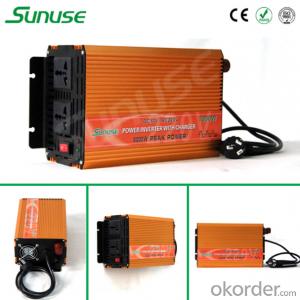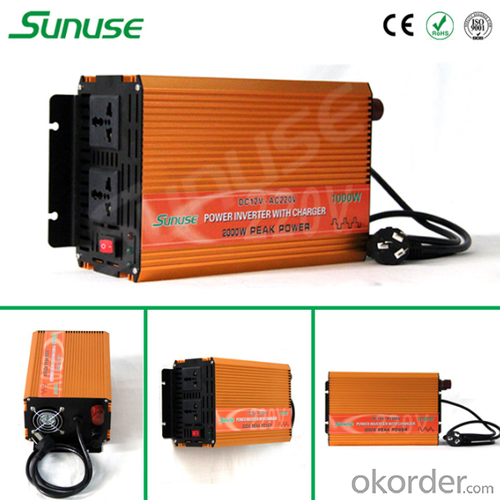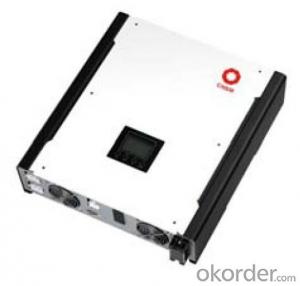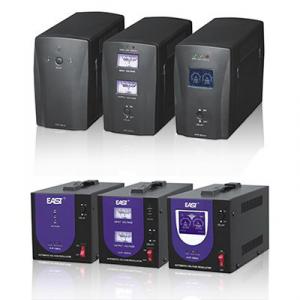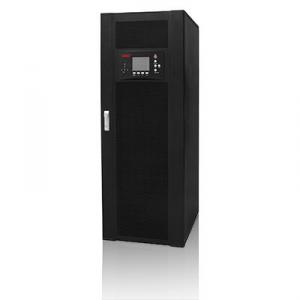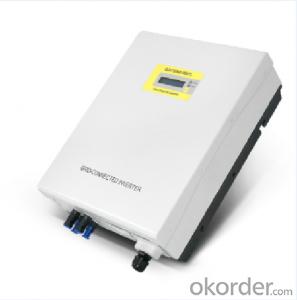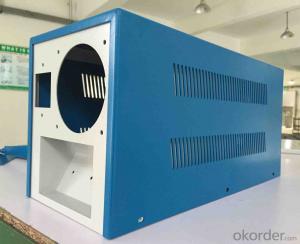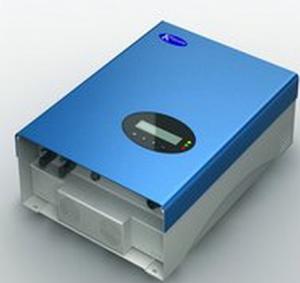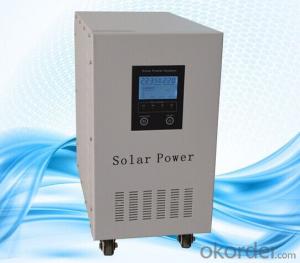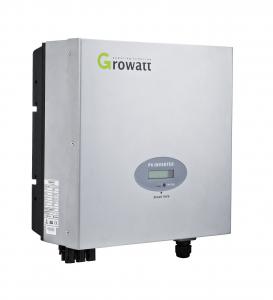Fimer Solar 1000W Home UPS Inverter 12V 220V with UPS Function
- Loading Port:
- Qingdao
- Payment Terms:
- TT or LC
- Min Order Qty:
- 50 unit
- Supply Capability:
- 30000 unit/month
OKorder Service Pledge
OKorder Financial Service
You Might Also Like
1. Structure of 1000W Home Ups Inverter, Inverter 12V 220V 1000W with Ups Function Description
A solar inverter, or PV inverter, or Solar converter, converts the variable direct current (DC) output of a photovoltaic (PV) solar panel into a utility frequency alternating current (AC) that can be fed into a commercial electrical grid or used by a local, off-grid electrical network. It is a critical BOS–component in a photovoltaic system, allowing the use of ordinary AC-powered equipment. Solar inverters have special functions adapted for use with photovoltaic arrays, including maximum power point tracking and anti-islanding protection.
2. Main Features of the 1000W Home Ups Inverter, Inverter 12V 220V 1000W with Ups Function
﹒Convert 12V/24V DC to 220V/110V AC to supply for the electronic products such as player MP3, player MP4
﹒DC 12/24V to AC 110/220V
﹒1000W home ups inverter
﹒Inverter 12v 220v 1000w with ups function
3. 1000W Home Ups Inverter, Inverter 12V 220V 1000W with Ups Function Images
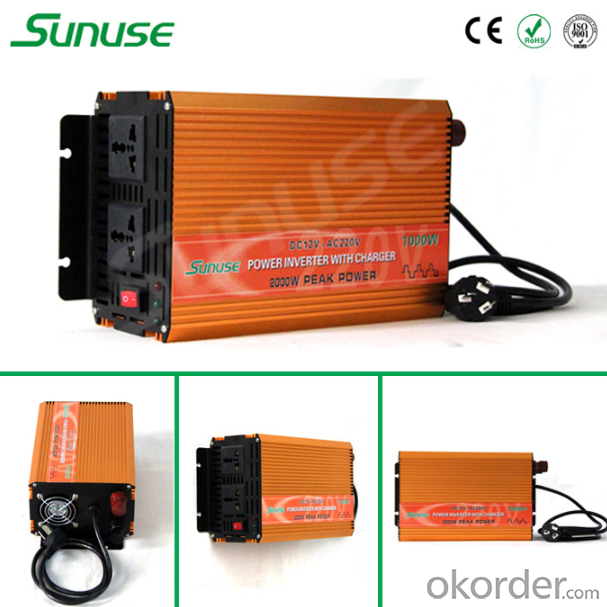
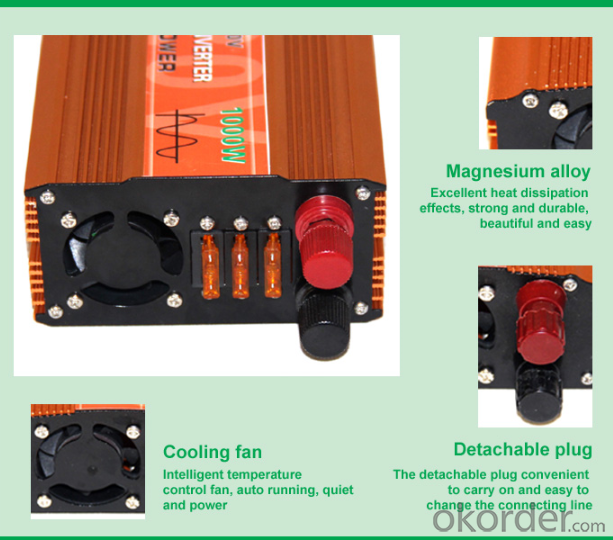
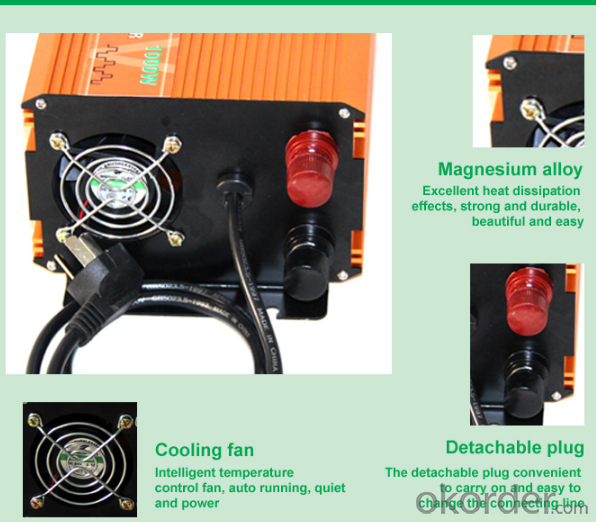
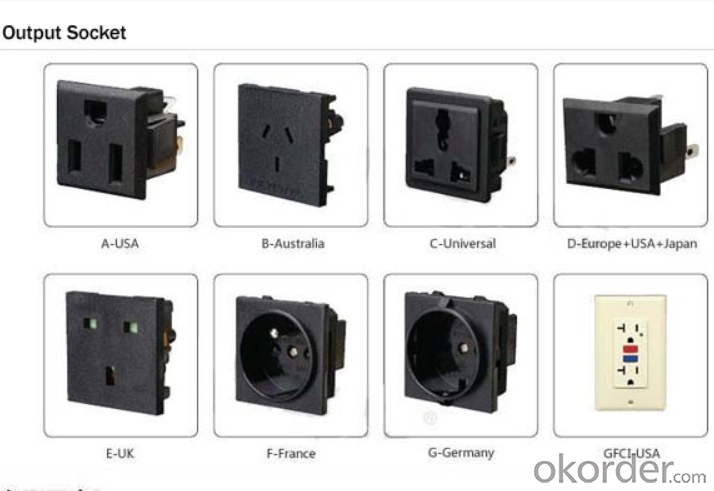
4. 1000W Home Ups Inverter, Inverter 12V 220V 1000W with Ups Function Specification
Input part | |
DC voltage: | 12V or 24V |
Voltage range: | 10-15VDC or 21-30VDC |
No load current draw: | <0.3a< span=""> |
Efficiency: | >92% |
DC connection: | Cables with clips |
Output part | |
AC voltage: | 100-120V or 220-240V |
Frequency: | 50Hz/60 Hz |
Continuous power: | 1000W |
Surge power: | 2000W |
Wave form: | modified sine wave |
AC regulation: | 3% |
Charge part | |
Charge current: | 10A |
Charge voltage: | 12V/24V |
Charge mode: | Three-gradation |
Protection part | |
Low voltage alarm: | 10DC±0.5V or 20.5DC±1V |
Low voltage shut down: | 9.5DC±0.5V or 19.5DC±1V |
Over load: | shut off output |
Over voltage shut down: | 15.5V or 30.5V |
Over thermal | shut off output automatically |
Environment part | |
Working temperature: | between -10°C and +50°C |
Working humidity: | 20% ~ 90% RH |
Storage temperature: | between -30°C and +70°C |
Package part | |
Machine size: | 235*150*100mm |
Packing size: | 355*250*163mm |
Net weight: | 2.55kg |
Gross weight: | 2.85kg |
Packing: | carton packaging |
Other part | |
Start: | soft start |
Cooling ways: | intelligent cooling fan |
5. FAQ of 1000W Home Ups Inverter, Inverter 12V 220V 1000W with Ups Function
Q1. What is the difference between inverter and solar inverter?
A1. Inverter only has AC inpput, but solar inverter both connect to AC input and solar panel, it saves more power.
Q2. What is the difference between MPPT&PWM?
A2. MPPT has higher efficiency, it can track the max power point and won't waste energy.
Q3. What is the waranty of product?
A3. 12 months.
- Q: What are the different types of solar inverters?
- There are three main types of solar inverters: string inverters, microinverters, and power optimizers.
- Q: How does a solar inverter handle voltage unbalance in the grid?
- A solar inverter handles voltage unbalance in the grid by employing its control algorithms to monitor and regulate the output voltage. When the solar inverter detects an unbalanced grid voltage, it adjusts the output voltage accordingly to maintain a balanced supply. This is typically achieved by injecting reactive power or adjusting the phase angle of the output voltage to synchronize it with the grid. By actively managing voltage unbalance, a solar inverter ensures stable and reliable power conversion in the presence of grid voltage fluctuations.
- Q: Can a solar inverter be used with a solar-powered backup generator?
- Yes, a solar inverter can be used with a solar-powered backup generator. A solar inverter is responsible for converting the DC (direct current) electricity generated by solar panels into AC (alternating current) electricity that can be used to power household appliances and other electrical devices. A solar-powered backup generator, on the other hand, uses solar energy to charge its batteries or store excess electricity. When the solar panels are generating electricity, the solar inverter will convert the DC electricity into AC electricity, which can be used directly in the household or sent back to the grid if the system is connected to it. If there is excess electricity being generated and the batteries of the solar-powered backup generator are fully charged, the solar inverter can divert the excess electricity to other loads or devices. During periods when solar energy is insufficient or not available, the solar-powered backup generator can kick in and provide the necessary electricity to power the house or recharge the batteries. In this case, the solar inverter will still be responsible for converting the DC electricity generated by the solar-powered backup generator into AC electricity. So, to summarize, a solar inverter can definitely be used with a solar-powered backup generator to ensure a continuous supply of electricity even when solar energy is limited.
- Q: What is the role of a grid protection relay in a solar inverter?
- The role of a grid protection relay in a solar inverter is to monitor the electrical grid for any abnormalities or faults, and to disconnect the solar inverter from the grid if necessary. This helps to ensure the safety and stability of the grid, as well as protecting the solar inverter from potential damage.
- Q: Can a solar inverter be used with different monitoring platforms?
- Yes, a solar inverter can typically be used with different monitoring platforms. Most modern solar inverters are designed to be compatible with various monitoring platforms, allowing users to choose the one that suits their needs and preferences. This flexibility enables users to monitor and manage their solar energy production and consumption effectively, regardless of the specific monitoring platform they choose to use.
- Q: What are the safety features in a solar inverter?
- Solar inverters, also known as photovoltaic (PV) inverters, play a crucial role in converting the direct current (DC) electricity generated by solar panels into alternating current (AC) electricity that can be used to power homes or businesses. In order to ensure the safe and efficient operation of solar inverters, they are equipped with various safety features. One of the primary safety features in a solar inverter is the ground fault protection. This feature is designed to detect any current leakage to the ground, which could indicate a fault in the system. If a ground fault is detected, the inverter will immediately shut down to prevent any potential electrocution hazards. To protect against overvoltage situations, solar inverters are equipped with surge protection devices (SPDs). These devices are responsible for diverting excessive voltage spikes or surges to the earth, thereby protecting the inverter and other connected electrical equipment from damage. In the event of a grid power outage or blackout, solar inverters are equipped with anti-islanding protection. This feature ensures that the inverter automatically disconnects from the grid, preventing any power backfeeding, which could pose a serious threat to utility workers trying to repair the grid. Temperature monitoring is another crucial safety feature in solar inverters. Since inverters can generate heat during operation, they are equipped with temperature sensors to monitor the internal temperature. If the temperature exceeds the safe limit, the inverter will automatically shut down to prevent any potential fire hazards. Furthermore, solar inverters are often equipped with built-in arc fault circuit interrupters (AFCIs). These devices are designed to detect and interrupt dangerous arc faults that can occur due to damaged or deteriorating wiring connections. By quickly stopping the flow of electricity, AFCIs help to prevent electrical fires. Lastly, many solar inverters have advanced monitoring and diagnostic systems. These systems provide real-time data and alerts, allowing users or installers to identify and address any potential safety issues promptly. Overall, the safety features in a solar inverter are crucial in ensuring the safe and reliable operation of the system. These features protect against electrical hazards, prevent damage to the inverter and connected equipment, and contribute to the overall safety of the solar power generation system.
- Q: Can a solar inverter be used in a community solar project?
- Yes, a solar inverter can be used in a community solar project. In fact, a solar inverter is an essential component of any solar power system, including community solar projects. It converts the direct current (DC) electricity generated by the solar panels into alternating current (AC) electricity that can be used to power homes and businesses in the community. The solar inverter also helps regulate the flow of electricity and ensures the system operates efficiently.
- Q: What is the function of a solar inverter in a solar power system?
- The function of a solar inverter in a solar power system is to convert the direct current (DC) produced by the solar panels into alternating current (AC), which is the type of electricity used in most homes and businesses. This allows the solar energy to be utilized for powering electrical appliances, feeding excess energy back into the grid, or storing it in batteries for later use.
- Q: Can a solar inverter be used in regions with high levels of electromagnetic interference?
- Yes, a solar inverter can be used in regions with high levels of electromagnetic interference. However, it is important to ensure that the inverter is properly shielded and meets the necessary electromagnetic compatibility standards to minimize any potential disruptions or malfunctions caused by the interference.
- Q: How does a solar inverter interact with the electrical grid?
- A solar inverter interacts with the electrical grid by converting the direct current (DC) electricity generated by solar panels into alternating current (AC) electricity, which is the standard form of electricity used in the grid. It synchronizes the AC electricity produced by the solar panels with the grid's frequency and voltage, allowing the excess energy to be fed back into the grid. The solar inverter also ensures that the energy produced by the solar panels is safely integrated with the grid, adhering to the grid's regulations and requirements.
Send your message to us
Fimer Solar 1000W Home UPS Inverter 12V 220V with UPS Function
- Loading Port:
- Qingdao
- Payment Terms:
- TT or LC
- Min Order Qty:
- 50 unit
- Supply Capability:
- 30000 unit/month
OKorder Service Pledge
OKorder Financial Service
Similar products
Hot products
Hot Searches
Related keywords
